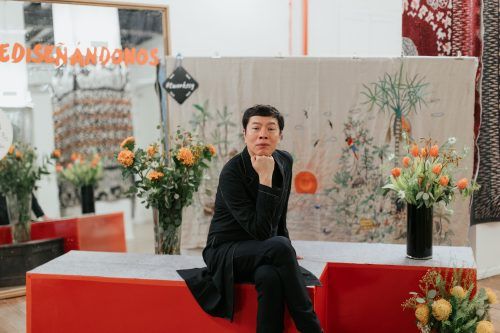Deepavali, or Diwali — the festival of lights — brings with it a sense of optimism and merriment. The festival, which will be celebrated this year on October 24, brings loved ones together.
Their laughter fills households as the diyas (earthen lamps) light up even the darkest corners of homes. The festival is celebrated to mark the return of Lord Ram, Sita and Laksman to Ayodhya after spending 14 years in exile.
The citizens of Ayodhya adorned their homes with diyas to welcome their king. To date, Deepavali is incomplete without decorating houses with earthen lamps and kolam — a design made with ground rice mainly in Tamil Nadu. A kolam enhances the aura of your home, lending a festive vibe.
You might like this…
Many believe that kolam artwork can be traced back to the Sanskrit epic of Mahābhārata, which depicts gopis (female cowherds) drawing kolams while their beloved Lord Krishna was away. However, historians believe that kolams were designed to guide shore dwellers on their voyage. They would draw out the constellations at the entrance of their homes before venturing into the sea. Moreover, the ritual of drawing a kolam at the threshold of a house is also a way of welcoming Goddess Lakshmi into your home.
Kolam is also fun to prepare with your friends and family. Here’s how to prepare and design kolam for Deepavali effortlessly.
A guide to preparing kolam for your home this Deepavali

Preparing the mixture
Kolams have always graced the floors to mark auspicious occasions. These designs are usually made with rice flour so that apart from enhancing your home’s beauty, it also serves as a source of food for ants, birds and other creatures. If you don’t want to use rice flour, you can choose to create kolam with kola podi (white rock powder), kolakkal (white rock stone) or semman (red brick powder).
Here’s what you need to do if you are opting for rice flour:
- Take some raw rice in a bowl and soak it in water overnight. If you are in a jiffy, soak it for three or four hours.
- Once the rice has been properly soaked, drain the extra liquid and grind the rice to get a smooth and thick paste.
- Place this mixture in a bowl and keep it in the sun for 12 hours. Make sure the mixture is completely dry and only then turn the bowl upside-down on a plate. The mixture should look like a cake once it’s out of the bowl.
- Now, carefully break the cake into smaller pieces and leave it in the sun to dry some more — for three to four hours.
- After all this is done, store these small pieces in an air-tight container.

Designing a beautiful kolam
Once you have prepared the basic material required for kolam, it’s time to create beautiful designs with it. Take a bowl and dissolve the required amount of the rice pieces in water. Make sure that the paste’s consistency is just right — neither too thick nor too runny.
You can either use a cotton bud or a paintbrush to draw a kolam or rangoli design to prep your home for the festive season — the only difference between the two being that rangoli is more free-flowing, whereas kolams require the creator to begin with dots and expand the design as they join these dots with lines and loops.
You can choose from various patterns of kolam, depending on where you want to create them in their home.
You can choose from a bevy of options — geometric patterns, floral designs or more complex designs like those of gods, goddesses and animals.
If you are a beginner, here are some kolam designs you can choose from. You can also use stencils to create the outline of the kolam.
Those who have experience in creating kolams can opt for more intricate designs.
After you have drawn out the desired pattern of your kolams, you can fill it with powdered colours or use flower petals to decorate them. Don’t forget to place diyas in and around the kolam, and celebrate the festival of lights to the fullest.
(Main and Featured image: SKsiddhartthan/Wikimedia Commons)





